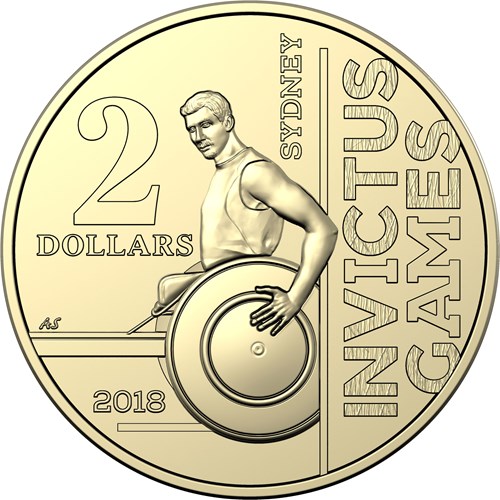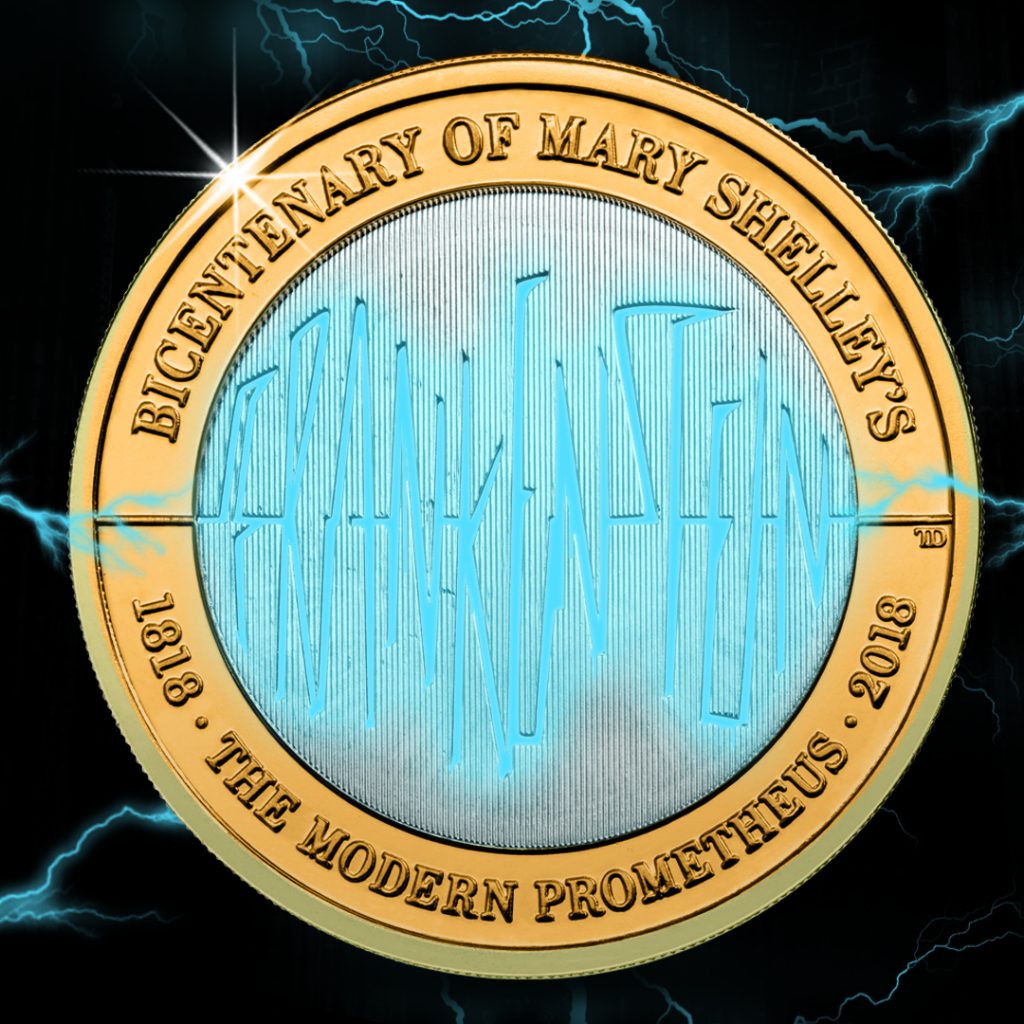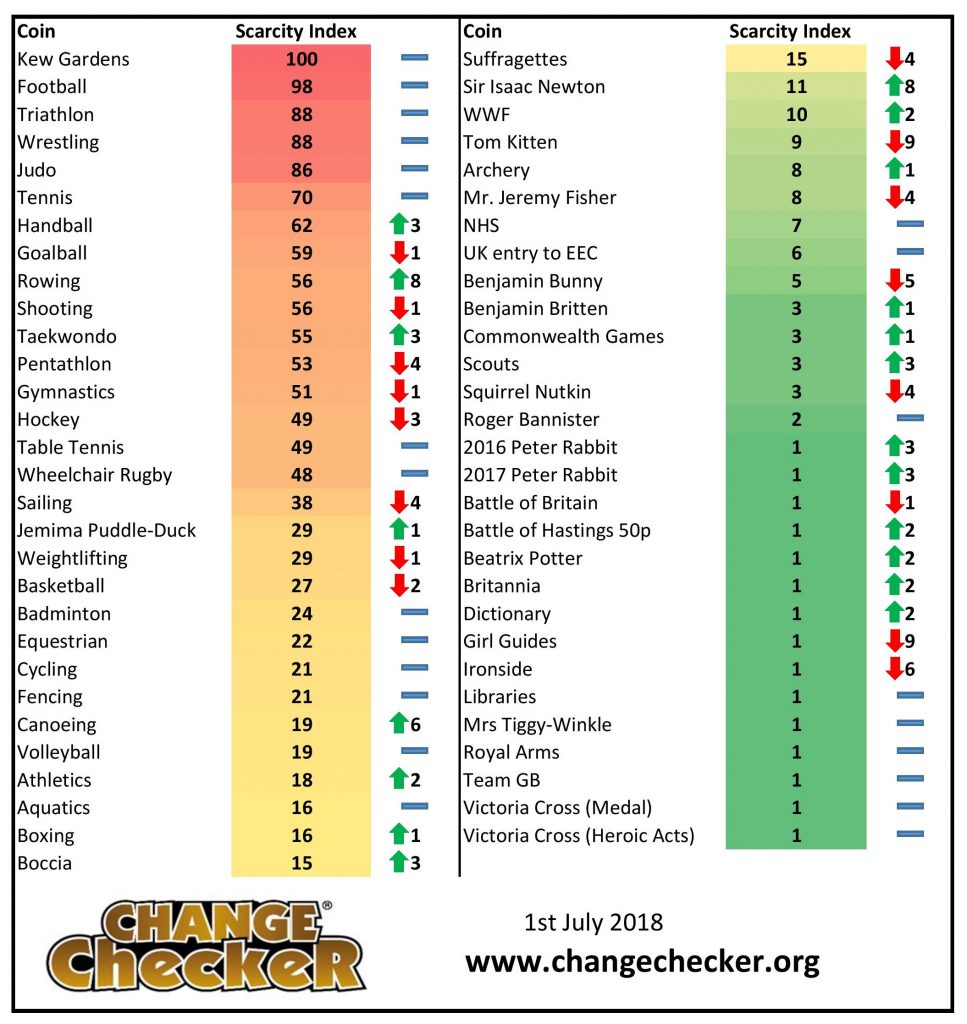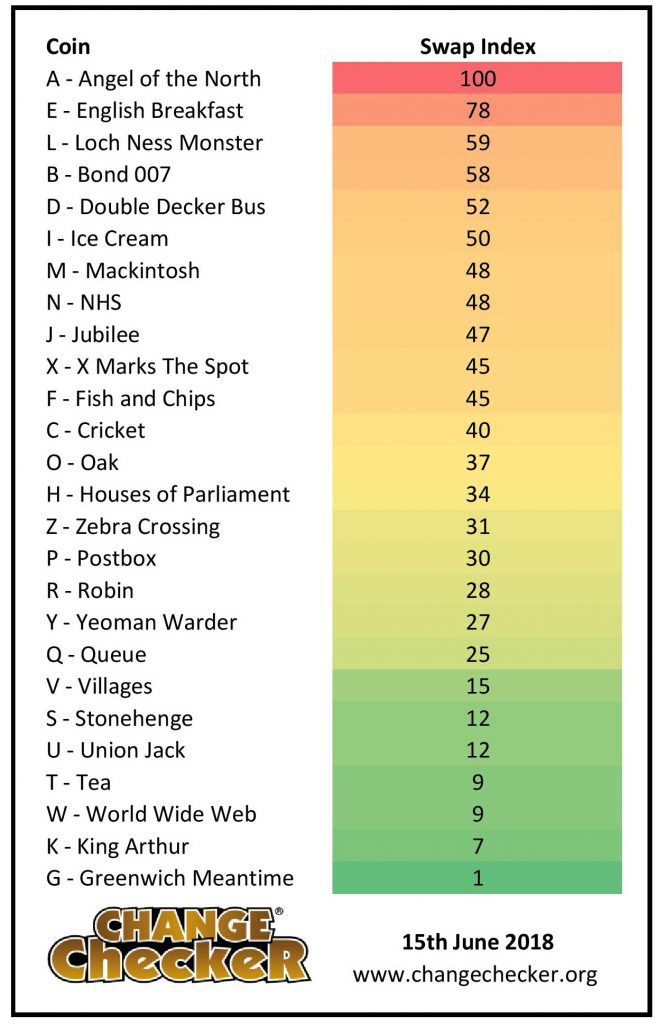Posts Tagged ‘£2’
The Australian $2 coin representing triumph over adversity…
HRH Prince Harry launched the very first Invictus Games at Queen Elizabeth Olympic Park, London in 2014, showcasing the incredible power of sport to inspire recovery and rehabilitation, and increase respect for those who have served their country.
The Games have installed a real sense of belonging for all, and as the international adaptive multi-sport event makes its way ‘down under’ to Sydney, Australia, something extra special will be happening this year for the Invictus Games to mark the fourth year running.
Because to commemorate this special event, The Royal Australian Mint have released a limited quantity of commemorative $2 AUD coins into circulation in Australia.

2018 Invictus Games $2 AUS
This $2 coin features a competitor in a wheelchair, with the words “Invictus Games” on the reverse. Taken from the Latin word for ‘unconquered’, ‘Invictus’ captures the spirit of the games and the competitors who won’t be defined by their injuries or disabilities.
2.3 million of these coins have been released over the past few months, meaning that they should be in the pockets of Australian change collectors by the time the games take place in October.
Invictus Games Sydney 2018 Chief Executive Officer Patrick Kidd OBE says:
“These coins are a fitting tribute to the men and women who serve and have served in our Defence forces and their families. The picture on the coin celebrates the unconquered spirit that this community displays each and every day and that you will all witness when these Games come to Sydney in October.”

Credit: www.ramint.gov.au
Over 500 competitors from 18 nations will compete in 11 different sports during the Games, including:
- Archery
- Athletics
- Indoor Rowing
- Jaguar Land Rover Driving Challenge
- Powerlifting
- Road Cycling
- Sailing
- Sitting Volleyball
- Swimming
- Wheelchair Basketball
- Wheelchair Rugby
Will any of you change checkers be heading ‘down under’ to watch the Games this October? Or if you have any Aussie friends, make sure they keep an eye out for the coin in their change!
Secure your Invictus Games $2!
We’ve managed to get hold of 125 coins for UK collectors so you can now own this fantastic $2 coin from Australia, representing triumph over adversity.
200 years since the birth of a monster – The 2018 Mary Shelly £2
The 2018 Mary Shelly £2 was issued to celebrate the 200th birthday of one of the most infamous fictional characters in historic literature – Frankenstein’s Monster!

To celebrate this important literary bi-centenary, The Royal Mint released a commemorative £2. The reverse features the word ‘Frankenstein’ in electric gothic font, along with ‘Bicentenary of Mary Shelley’s The Modern Prometheus’ written around the edge.
The edge inscription reads ‘A spark of being’, the words of Dr Victor Frankenstein when he creates ‘creature’.

The monster behind the story
With film adaptations across various genres, from the quasi-rock opera The Rocky Horror Picture Show, to sci-fi classics like Prometheus, the tale of the dysfunctional Victor Frankenstein and his mad scientific invention is known by all of us in some shape or form.

Image credit: Universal 2004, Public domain, via Wikimedia Commons
In the gothic tale, written by Mary Shelley, an obsessed Victor Frankenstein attempts to bring a corpse back to life in his laboratory through mad methods of chemistry, alchemy and a ‘flash’ of electricity.
Do you have the 2018 Mary Shelley £2 in your collection? Let us know in the comments!
UPDATED: The results of our latest Scarcity Index are in…
The latest Change Checker Scarcity Index update of 2018 is here and the results are in…
The 50p and £2 Scarcity Indexes have been compiled using data from the second quarter of the year.
As per our previous quarter, you can now use our new feature to help you track the performance of your coins. The arrows signify how many places, up or down, a coin has moved on the Scarcity Index; any coins with a yellow star are making their first appearance after having been released into circulation.
50p Scarcity Index

Not surprisingly, Kew Gardens still remains the most scarce UK 50p coin with a mintage figure of just 210,000. There has been a lot of movement this quarter, with significant improvements in the performance of Sir Isaac Newton, Rowing and Canoeing.
On the other hand, both Girl Guides and Tom Kitten have seen less interest, with both coins moving 9 points down the Index.
Our top and bottom 6 coins seem to remain consistent for now, although there is always the potential for change as new coins enter circulation, and we’ve had a number of new releases recently that could mix things in up…
£2 Scarcity Index
Although the 2017 WW1 Aviation and Jane Austen £2 coins are yet to enter circulation, we’ve still seen some movement amongst the current coins in our Scarcity Index.
The ever popular Commonwealth Games Northern Ireland £2 regains its place at the top after a briefly being replaced by Wales. Another strong improvement goes to Trinity House, which has also moved up the Index 4 places.
On the other end of the spectrum, the Rugby World Cup and Florence Nightingale coins have moved down the Index this quarter, with Florence Nightingale dropping an impressive 8 places. This is due in part to a lack of Change Checkers requesting to swap these coins, however we wouldn’t be surprised to see these coins creeping up the Index in the next quarter.
What about the A to Z 10p coins?
Unfortunately, at present, there is simply not enough data to accurately compile a full A to Z 10p Scarcity Index. However, we have put together a ‘Swap Index’ using data from the Change Checker App which we feel is the most accurate way currently to determine which A-Z 10ps are most sought after.

Our top two coins (A for Angel of the North and E for English Breakfast) are very clearly the most sought after, with L for Loch Ness Monster coming in third. Speculation as to why people might be collecting certain designs is three pronged: 1) Perhaps people are looking for A to start their collection at the beginning of the alphabet. 2) They could be looking for coins that match their initials. 3) People might be collecting the coins based on which design/theme is their favourite.

Initially, a limited stock of 2.6 million A-Z 10p coins were released into circulation through the Post Office network to coincide with the release of the designs in March. It has been no surprise that these have been quickly snapped up by eagle-eyed change collectors.
As more coins enter circulation and are found, we will begin to see more data emerge and a full Index for these coins will be compiled.
How the Scarcity Index works
Generally collectors have had to rely upon mintage figures to identify the scarcest coins. But they only tell part of the story. Trying to find a good quality coin from 15 – 20 years ago, even for a higher mintage issue, is much more challenging than a more recent issue, as coins become damaged over time and are ultimately removed from circulation.
Additionally, some designs are more hoarded than others by people who might not normally collect coins – the recent poignant First World War £2 Coin series being an example. Finally, it can be up to a couple of years before the Royal Mint eventually confirms the actual mintage for an issue.
That’s why we have combined the mintage information with two other key pieces of information.
- How many of each design are listed as “collected” by Change Checkers, indicating the relative ease of finding a particular coin.
- The number of times a design has been requested as a swap over the previous 3 months, showing the current level of collector demand.
Importantly, as new coins are released and popularity rises and falls across different designs the Scarcity Index will be updated quarterly allowing Change Checkers to track the relative performance of the UK’s circulation coins.
How much are my coins worth?
The Scarcity Index does not necessarily equate to value but it is certainly an effective indicator. For example, the Kew Gardens 50p coin commands a premium of up to 160 times face value on eBay.
What about £1 Coins?
The £1 Scarcity Index has already been published for the Round £1 coins and, because they are no longer being issued, this is now set in stone.
If you’re interested in coin collecting, our Change Checker web app is completely free to use and allows users to:
– Find and identify the coins in their pocket
– Collect and track the coins they have
– Swap their spare coins with other Change Checkers

Sign up today at: www.changechecker.org/app

